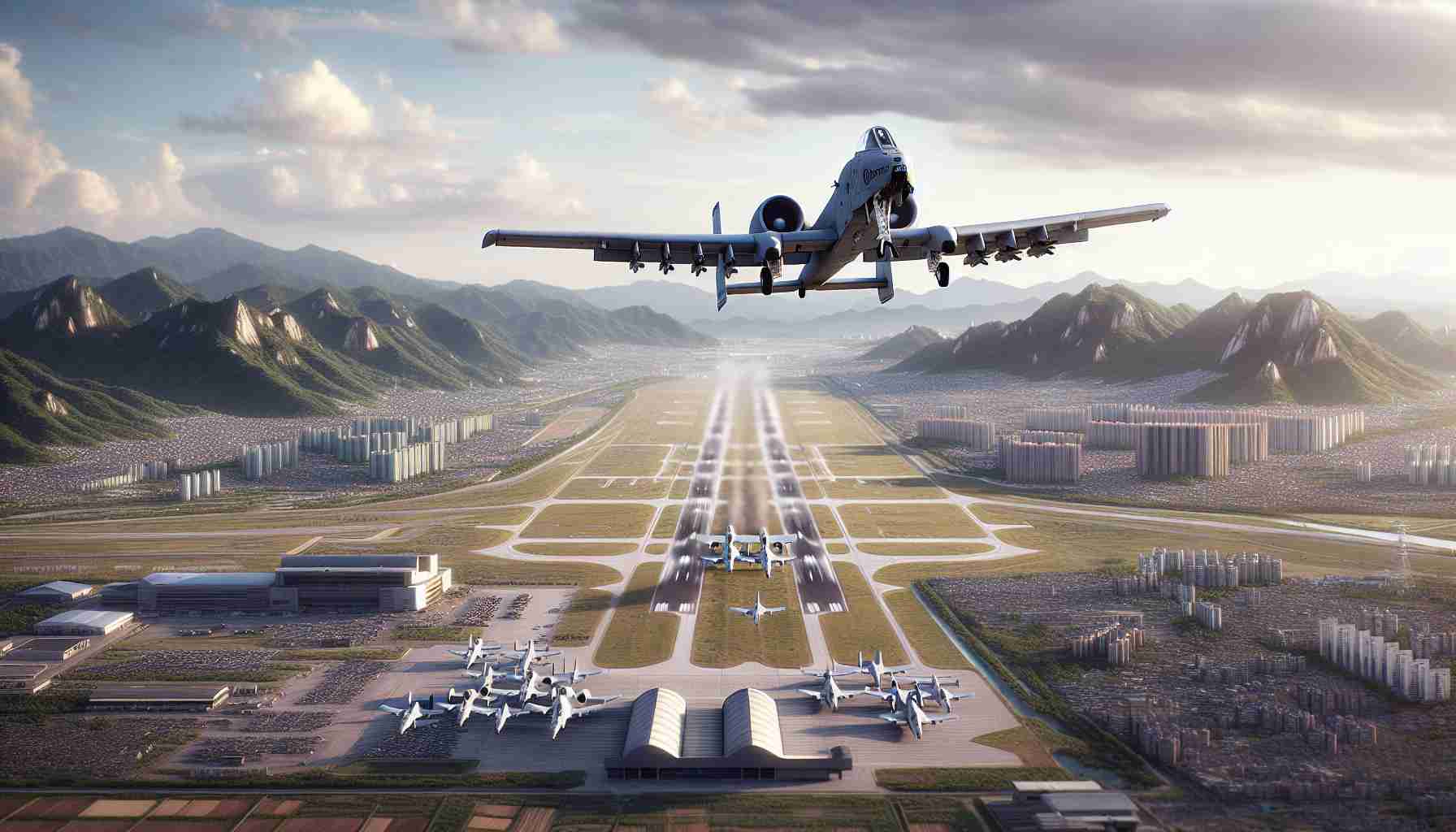The iconic A-10 Thunderbolt II, affectionately known as the Warthog, is set to bid farewell to Osan Air Base in South Korea, its final overseas outpost. Beginning in January, the U.S. Air Force will start to withdraw all 24 aircraft from the region, with a complete departure by the end of fiscal 2025.
Strategic Shifts in the Pacific: This move is part of a broader strategy by the U.S. Air Force to enhance its force structure in Korea and the greater Pacific. While the A-10s are being retired, the remaining F-16 fighters on the peninsula are receiving significant avionics upgrades under the Post Block Integration Team (PoBIT) initiative.
In a recent reshuffle, F-16s from Kunsan Air Base were consolidated at Osan, forming a formidable “super squadron” aimed at maximizing combat readiness—a concept currently under a yearlong evaluation. Meanwhile, F-35 fighters have been dispatched to Misawa Air Base in Japan, alongside F-15EX fighters at Kadena Air Base, marking their first overseas deployment in the Pacific region.
A New Era of Air Power: According to the 7th Air Force, these actions will greatly enhance air combat capabilities in the Korean theater by integrating advanced fourth and fifth-generation aircraft. Yet, there is no official word on whether new fighters will replace the retiring A-10s in South Korea.
Having served in Korea since 1982, the A-10s’ departure marks the end of an era for close air support in the region. The Air Force is shifting roles for A-10 units, with plans that include transitioning bases to host new missions and aircraft types, signaling the Warthog’s gradual phase-out worldwide.
The End of an Era: The A-10 Thunderbolt’s Impact on Future Air Combat Innovations
The iconic A-10 Thunderbolt II, affectionately known as the “Warthog,” is stepping away from its last overseas stronghold at Osan Air Base in South Korea, signaling a profound shift in military strategy and technology. Although the A-10’s contribution to close air support has been invaluable, its upcoming withdrawal by the end of fiscal year 2025 sparks a dialogue about the future trajectory of air combat technologies and strategies within the U.S. Air Force and beyond.
Balancing Legacy and Innovation
As the U.S. Air Force restructures its presence in the Pacific, the question arises: What will the absence of the A-10 mean for military operations? While the A-10 has proven its mettle in ground support, newer aircraft like the F-35 and F-15EX promise enhanced capabilities with stealth technology and advanced avionics. These fifth-generation fighters offer substantial advantages, such as superior speed, agility, and situational awareness, providing tactical superiority in modern combat scenarios.
Advantages of Modern Fighters
The transition toward advanced airframes like the F-35 represents a strategic pivot. The aircraft’s stealth features, sophisticated sensors, and networking abilities allow it to gather and share real-time information, offering greater operational flexibility and effectiveness. This modernization not only improves combat readiness but also positions the Air Force to counter evolving threats effectively. These capabilities are crucial, especially in the dynamic Pacific theater, which is of growing geopolitical importance.
Challenges and Controversies
However, the future is not without its challenges. The F-35 program, despite its advanced capabilities, has faced scrutiny due to its high costs and technical complications. Questions about maintainability and unit cost have sparked debates about the balance between quality and affordability. Can the Air Force sustain such expenditures while maintaining its global commitments?
Moreover, as these advanced fighters take center stage, there is concern about the loss of specialized capabilities that the A-10 provided, particularly its low-speed maneuverability and resilience in close air support roles. Could cutting-edge technology effectively replace these unique attributes, or is there a risk of compromising ground support efficiency?
The Human Element in Technological Evolution
As new technologies emerge, another aspect to consider is the impact on personnel. Transitioning from A-10 operations to modern aircraft involves retraining programs and adapting to sophisticated systems, demanding a shift in pilot and crew skills. How will the Air Force support this transition, and what impact will it have on human resources and training infrastructure?
The conversation around modernizing the fleet evokes broader discussions about the role of AI and unmanned systems in future conflicts. Could the focus shift towards developing autonomous capabilities, potentially reducing the need for direct human involvement in combat? Such innovations could redefine the landscape of military strategy and human participation.
Navigating the Future
Ultimately, with the retirement of the A-10, opportunities arise to rethink air power’s role in defense strategy. The way forward involves leveraging technology to meet contemporary challenges while preserving the integrity of missions essential to national and international security.
For those interested in further exploring these developments, resources like defense.gov offer comprehensive insights into military innovations and strategic planning.
In summary, as the U.S. Air Force bids farewell to the Warthog, it marks not just the end of an era, but the dawn of a new chapter in aviation technology and strategic warfare. Will the future of air combat strike the right balance between innovation and practicality? Only time will tell.






















